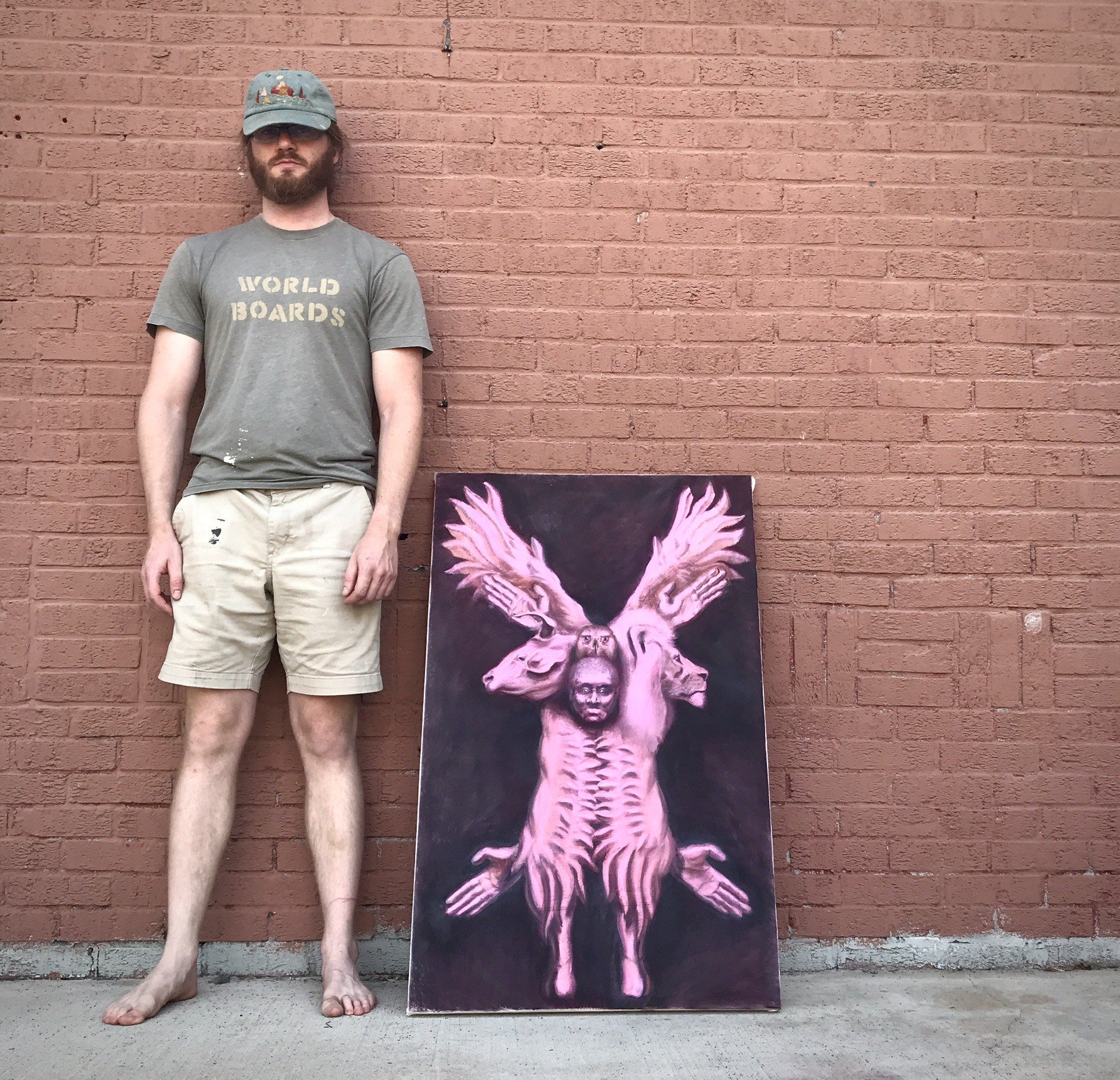Hi all,
Welcome back to the blog! Today, I’ve got updates on the angel painting, as well as recent shows.
As I mentioned in my last post, I got into the Wrightwood Wine and Arts Festival, which I showed at in May. I turned the show into a small road trip, and I got to see some really beautiful places along the way. I of course brought a sketch book with me to document them. Here’s a drawing from Moab, Utah:
and another from Snow Canyon (also in Utah):
Although that sketch was a fun one for the campsite I stayed in, it doesn’t really do the park justice, so here’s a quick video I took, too, just for good measure:
The festival in Wrightwood was a beautiful day — plenty of sun, art, and interesting people. I brought a few more pieces with me than I anticipated, too . . .
In addition to Wrightwood, I also recently showed at another Pancakes and Booze pop-up show here in Denver. I decided to change it up a little this time and bring some bigger pieces with me.
I also had a few more prints made for the show, so if you’re in the market for some giclée prints, stop by my Etsy account or shoot me an email!
Giclée prints — “Angel Torso,” 10’’ x 7.5’’ (left); “Shipwreck,” 9.5’’ x 8.25’’ (right)
Outside of the recent shows, I’ve been continuing to hack away at the cherub painting. When I last posted, I had finished all the studies and was starting on the underpainting. I’m very excited (relieved?) to share that I finally have finished the underpainting:
“Cherub — Ezekiel’s Vision” (WIP) - oil on canvas - 42’’ x 26’’
Freaky, right? If you’ve been keeping up with the project, you know that I’m using Ezekiel I (yes, that Ezekiel) for the textual reference. The Bible’s got some pretty bizarre imagery.
This painting has been a long haul . . . and I’m only halfway done. To give you a better idea of the scale, here’s me and the painting side-by-side:
I’m 5’11’’, and it comes up to my waist, so it’s not quite life-sized (whatever that means), but it’s definitely a biggun.
Because of its size, I think some aspects of the painting are better seen up close. Here’s a quick tour of the details:
I used such warm colors because Ezekiel describes the cherubim’s appearances as “like burning coals of fire or torches”. You can look forward to some color studies of burning coals (and maybe torches?) in my next post.
Aside from all the painting news, we also recently released a new issue (15.1) of Consequence. Stop by the website and pick up your copy up today!
The reading period for our next print issue is also open. If you’re a writer, be sure to send us your best work on the culture and human consequences of war and geopolitical violence before the reading period closes on October 15!
That’s it for now. Thanks for stopping by, and keep creating!









